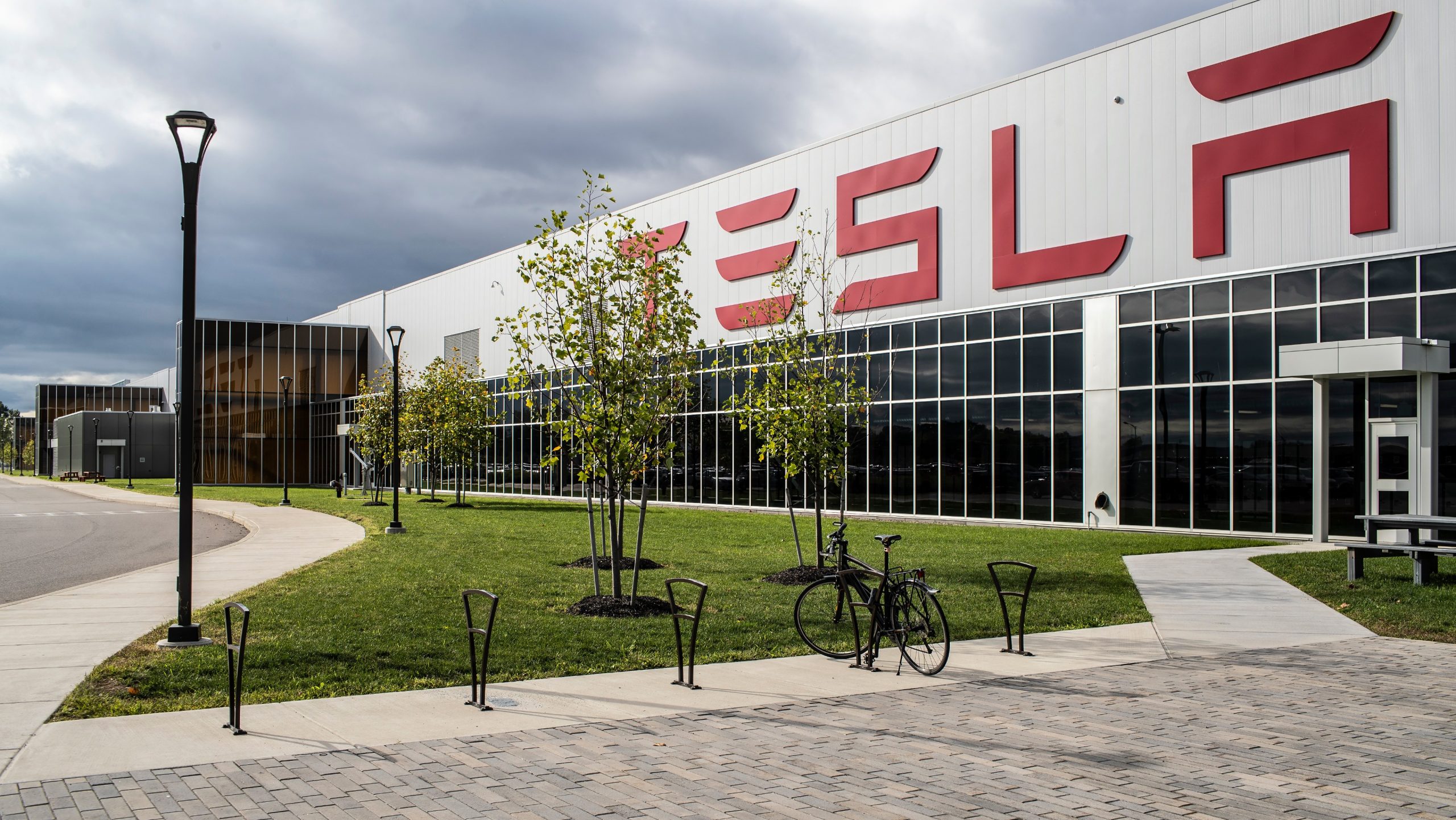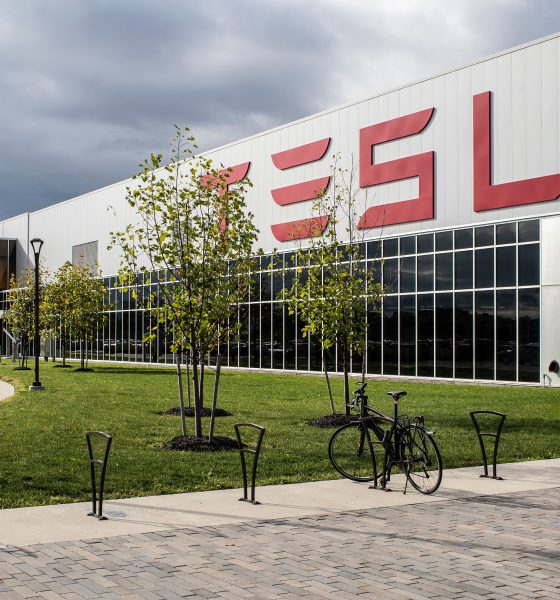Tesla’s Giga New York facility is ramping production to meet Elon Musk’s goals for the company’s energy business. Tesla started ramping solar roof sales and installations in 2019 when Q4’s 54 MW deployment showed a 26% jump from the previous quarter’s 43 MW.
In a series of recent tweets, the CEO shared some of his appreciation for the company’s workers involved in the ongoing rollout of the Solarglass Roof tiles. The third-generation tiles are Tesla’s flagship residential solar product, and they have the potential to disrupt the energy sector in a manner similar to how the Model 3 disrupted the midsize sedan market.
Musk’s tweets provided some updates about Tesla’s Solarglass Roof tiles. According to the CEO, new variants for the solar shingles are coming, though the company is mastering its current black tiles first. Tesla is also currently busy with installations in the Bay Area, though an expansion to other territories is coming soon.
Hard to believe that is high efficiency solar power seamlessly integrated into beautiful roof tiles. Great work by SolarGlass engineering, Giga NY factory & Tesla installation teams!
— Elon Musk (@elonmusk) February 9, 2020
California Today, The Rest Of The World Tomorrow
Starting Tesla’s Solarglass push in California makes a lot of sense, considering that it is a state where residents enjoy a solar investment tax credit of 26% for the purchase cost of energy systems between January 1 to December 31, 2020. This energy incentive will drop to 22% by 2021, and it will be retired by 2023. The incentives seem to have worked for the most part. As of December 2019, the state has 1 million solar systems installed, the majority of which are in residential properties.
Just like how Elon Musk plans to put Gigafactories in every continent to lay the foundation for Tesla, California is an excellent location to build a stronghold and develop a good case to convince consumers in other places to buy the company’s solar solutions. Musk, as most people might know, has the grand plan of transitioning the world towards sustainability and his current endeavor is an initial step to that goal.
Tesla has adopted a series of initiatives that are designed to make its energy products more attractive to consumers. Aside from lowering prices in October, Tesla has also introduced an incentive program encouraging Tesla owners to share their experiences about their energy products.
“The demand is very strong and we are working also not just through Tesla Solar Roof, but also through new homebuilders and through just the roofing industry in general, whether is in North America on the order of 4 million new roofs per year,” Musk said during the recent Tesla Q4 2019 earnings call.
According to Musk, he believes that eventually, the Solarglass Roof would be a matter of choice for consumers between having a live roof that generates power and a conventional roof that only serves a single purpose. Tesla may have a revolutionary product in the Solarglass Roof, and if it were to succeed, it will allow Tesla Energy to grow at a pace that matches or even exceeds that of the company’s electric car business.
The solar industry has a big room to grow and draws a bright future for players such as Tesla. Of all greener energy options, it is expected to boom the fastest from today through 2050.
I was pleasantly surprised by my recent visit to the Tesla plant. It was encouraging to see Solar roofs, batteries, and charging stations being built in the facility. Tesla reports over 1100 workers at the plant and they say they will hit 1460 by the April deadline. pic.twitter.com/33aSuRdQLC
— Senator Sean Ryan (@SenSeanRyan) February 8, 2020
Tesla’s Giga New York Ramps Production
To meet the demand, Tesla’s Giga New York is bustling with activity. The 88-acre property in Buffalo is home to the factory that produces Tesla’s solar modules. New York State Assembly member Sean Ryan toured the Tesla factory in Buffalo last Friday and was pleased with the progress.
“The factory is built out. It has complete lines running, product moving around, people are there, so it’s really transformed itself into what we’ve been hoping for,” Ryan said. “We’ve been holding our breath since we put that big bet down on Tesla. They had a slow start, and I was worried as we’re appoaching this spring they were going to hit their deadlines, but they’re right on track.”
Ryan last visited the factory 15 months ago and his testimony corroborates Musk claims recently that Giga new York is operating at a good pace.

News
Tesla starts showing how FSD will change lives in Europe
Local officials tested the system on narrow country roads and were impressed by FSD’s smooth, human-like driving, with some calling the service a game-changer for everyday life in areas that are far from urban centers.

Tesla has launched Europe’s first public shuttle service using Full Self-Driving (Supervised) in the rural Eifelkreis Bitburg-Prüm region of Germany, demonstrating how the technology can restore independence and mobility for people who struggle with limited transport options.
Local officials tested the system on narrow country roads and were impressed by FSD’s smooth, human-like driving, with some calling the service a game-changer for everyday life in areas that are far from urban centers.
Officials see real impact on rural residents
Arzfeld Mayor Johannes Kuhl and District Administrator Andreas Kruppert personally tested the Tesla shuttle service. This allowed them to see just how well FSD navigated winding lanes and rural roads confidently. Kruppert said, “Autonomous driving sounds like science fiction to many, but we simply see here that it works totally well in rural regions too.” Kuhl, for his part, also noted that FSD “feels like a very experienced driver.”
The pilot complements the area’s “Citizen Bus” program, which provides on-demand rides for elderly residents who can no longer drive themselves. Tesla Europe shared a video of a demonstration of the service, highlighting how FSD gives people their freedom back, even in places where public transport is not as prevalent.
What the Ministry for Economic Affairs and Transport says
Rhineland-Palatinate’s Minister Daniela Schmitt supported the project, praising the collaboration that made this “first of its kind in Europe” possible. As per the ministry, the rural rollout for the service shows FSD’s potential beyond major cities, and it delivers tangible benefits like grocery runs, doctor visits, and social connections for isolated residents.
“Reliable and flexible mobility is especially vital in rural areas. With the launch of a shuttle service using self-driving vehicles (FSD supervised) by Tesla in the Eifelkreis Bitburg-Prüm, an innovative pilot project is now getting underway that complements local community bus services. It is the first project of its kind in Europe.
“The result is a real gain for rural mobility: greater accessibility, more flexibility and tangible benefits for everyday life. A strong signal for innovation, cooperation and future-oriented mobility beyond urban centers,” the ministry wrote in a LinkedIn post.
News
Tesla China quietly posts Robotaxi-related job listing
Tesla China is currently seeking a Low Voltage Electrical Engineer to work on circuit board design for the company’s autonomous vehicles.

Tesla has posted a new job listing in Shanghai explicitly tied to its Robotaxi program, fueling speculation that the company is preparing to launch its dedicated autonomous ride-hailing service in China.
As noted in the listing, Tesla China is currently seeking a Low Voltage Electrical Engineer to work on circuit board design for the company’s autonomous vehicles.
Robotaxi-specific role
The listing, which was shared on social media platform X by industry watcher @tslaming, suggested that Tesla China is looking to fill the role urgently. The job listing itself specifically mentions that the person hired for the role will be working on the Low Voltage Hardware team, which would design the circuit boards that would serve as the nervous system of the Robotaxi.
Key tasks for the role, as indicated in the job listing, include collaboration with PCB layout, firmware, mechanical, program management, and validation teams, among other responsibilities. The role is based in Shanghai.
China Robotaxi launch
China represents a massive potential market for robotaxis, with its dense urban centers and supportive policies in select cities. Tesla has limited permission to roll out FSD in the country, though despite this, its vehicles have been hailed as among the best in the market when it comes to autonomous features. So far, at least, it appears that China supports Tesla’s FSD and Robotaxi rollout.
This was hinted at in November, when Tesla brought the Cybercab to the 8th China International Import Expo (CIIE) in Shanghai, marking the first time that the autonomous two-seater was brought to the Asia-Pacific region. The vehicle, despite not having a release date in China, received a significant amount of interest among the event’s attendees.
Elon Musk
Elon Musk and Tesla AI Director share insights after empty driver seat Robotaxi rides
The executives’ unoccupied tests hint at the rapid progress of Tesla’s unsupervised Robotaxi efforts.

Tesla CEO Elon Musk and AI Director Ashok Elluswamy celebrated Christmas Eve by sharing personal experiences with Robotaxi vehicles that had no safety monitor or occupant in the driver’s seat. Musk described the system’s “perfect driving” around Austin, while Elluswamy posted video from the back seat, calling it “an amazing experience.”
The executives’ unoccupied tests hint at the rapid progress of Tesla’s unsupervised Robotaxi efforts.
Elon and Ashok’s firsthand Robotaxi insights
Prior to Musk and the Tesla AI Director’s posts, sightings of unmanned Teslas navigating public roads were widely shared on social media. One such vehicle was spotted in Austin, Texas, which Elon Musk acknowleged by stating that “Testing is underway with no occupants in the car.”
Based on his Christmas Eve post, Musk seemed to have tested an unmanned Tesla himself. “A Tesla with no safety monitor in the car and me sitting in the passenger seat took me all around Austin on Sunday with perfect driving,” Musk wrote in his post.
Elluswamy responded with a 2-minute video showing himself in the rear of an unmanned Tesla. The video featured the vehicle’s empty front seats, as well as its smooth handling through real-world traffic. He captioned his video with the words, “It’s an amazing experience!”
Towards Unsupervised operations
During an xAI Hackathon earlier this month, Elon Musk mentioned that Tesla owed be removing Safety Monitors from its Robotaxis in Austin in just three weeks. “Unsupervised is pretty much solved at this point. So there will be Tesla Robotaxis operating in Austin with no one in them. Not even anyone in the passenger seat in about three weeks,” he said. Musk echoed similar estimates at the 2025 Annual Shareholder Meeting and the Q3 2025 earnings call.
Considering the insights that were posted Musk and Elluswamy, it does appear that Tesla is working hard towards operating its Robotaxis with no safety monitors. This is quite impressive considering that the service was launched just earlier this year.










